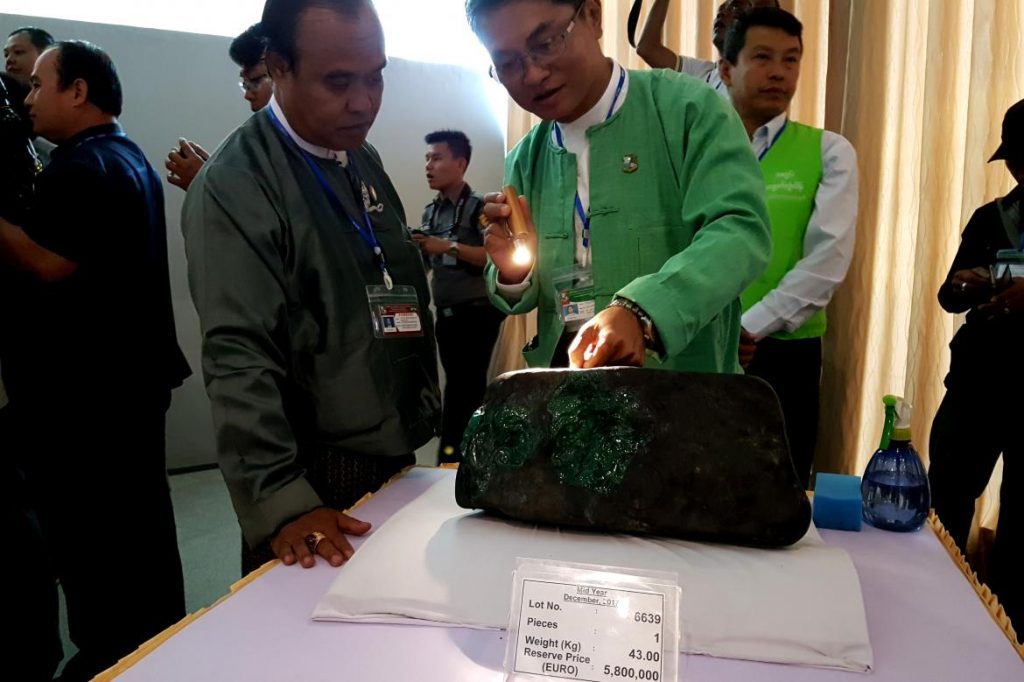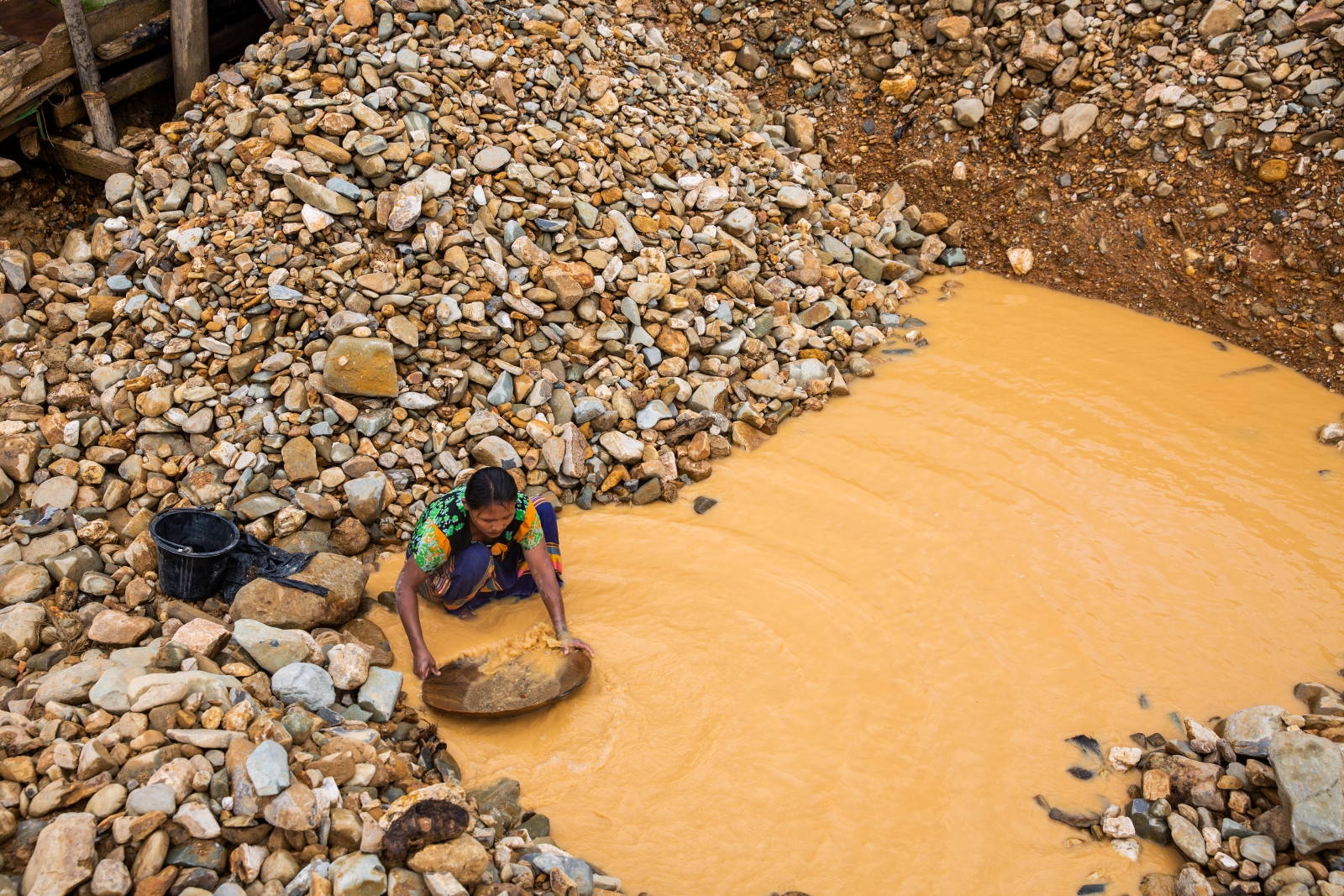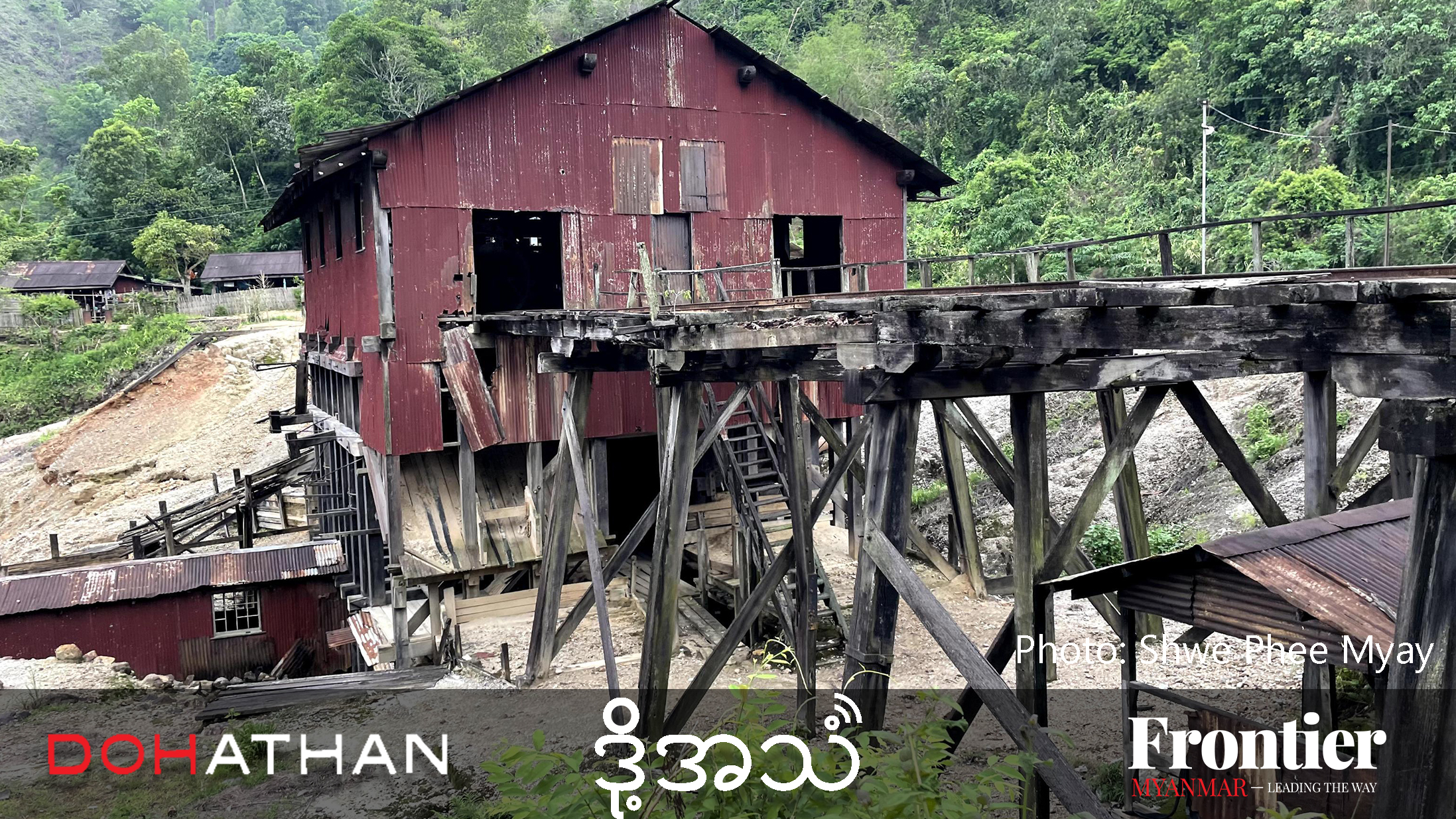The second Myanmar Gems Emporium of the year was held in Nay Pyi Taw from December 12 to 21. Here’s what we learned.
By NYAN HLAING LYNN | FRONTIER
Not your grandma’s gem emporium
Despite the event’s title, most of the lots on offer were jade. A total of 5,054 jade lots were sold for €438.58 million (about K710 billion). In contrast, 32 gem lots fetched €770,000 – less than 0.2 percent of total sales.
Passed in
Lots with highest floor prices were not sold. They included two jade lots priced at €5.8 million each. However, one lot of six jade stones with a fixed price set at €100,000, fetched €12.5 million – more than 100 times the floor price.
No company names
The Gems Emporium organising committee declined to reveal a list of the companies that sold stones at the event. “We can release the numbers of lots sold at the emporium but we have to look for the names of the companies so we have not been able to release them,” U Than Zaw Oo, deputy chairman of the organising committee, told Frontier. In a notoriously opaque industry, where the majority of the trade goes through illegal channels, this lack of transparency will be concerning to many.
Lost revenue
Every emporium some buyers who submit successful bids do not follow through with their purchase. Than Zaw Oo said this typically occurred when the jade price fell between the emporium and the settlement date. To discourage this practice, buyers have to pay a five percent deposit. Even so, figures provided by the Ministry of Natural Resources and Environmental Conservation show that about 20 percent of sales at every emporium are not concluded, with the buyers forfeiting their deposit. “They choose to lose the advance money,” Than Zaw Oo said. The deposit is split between the government, which gets 15 percent, and the company that put the lot up for auction, which gets 85 percent.
Support more independent journalism like this. Sign up to be a Frontier member.
Restricted media access
The media is permitted to attend the first four days of the emporium, but not on subsequent days when sales are made by tender. “The committee believes that four days is enough time to conduct interviews and take photos,” said Than Zaw Oo. “If the media says more days are needed, we will report to our superiors.”
Finished products fall flat
A total of 190 lots of gems and 6,685 jade lots were displayed at the emporium, but only 85 lots were finished products, said U Myint Han, a deputy chairman of the Myanmar Gems and Jewellery Entrepreneurs Association. More time was needed to improve the quality and quantity of finished products, he told Frontier, adding that training courses had begun.
China still dominates
More than 50 percent of the companies at the emporium were from China. Of the 1,600 companies at the event, 888 were from China, 21 from Thailand, three from South Korea, and one from Canada, and the rest from Myanmar. There were 2,817 traders from China, 1,580 from Myanmar, 21 from Thailand, three from South Korea, and one from Canada.







